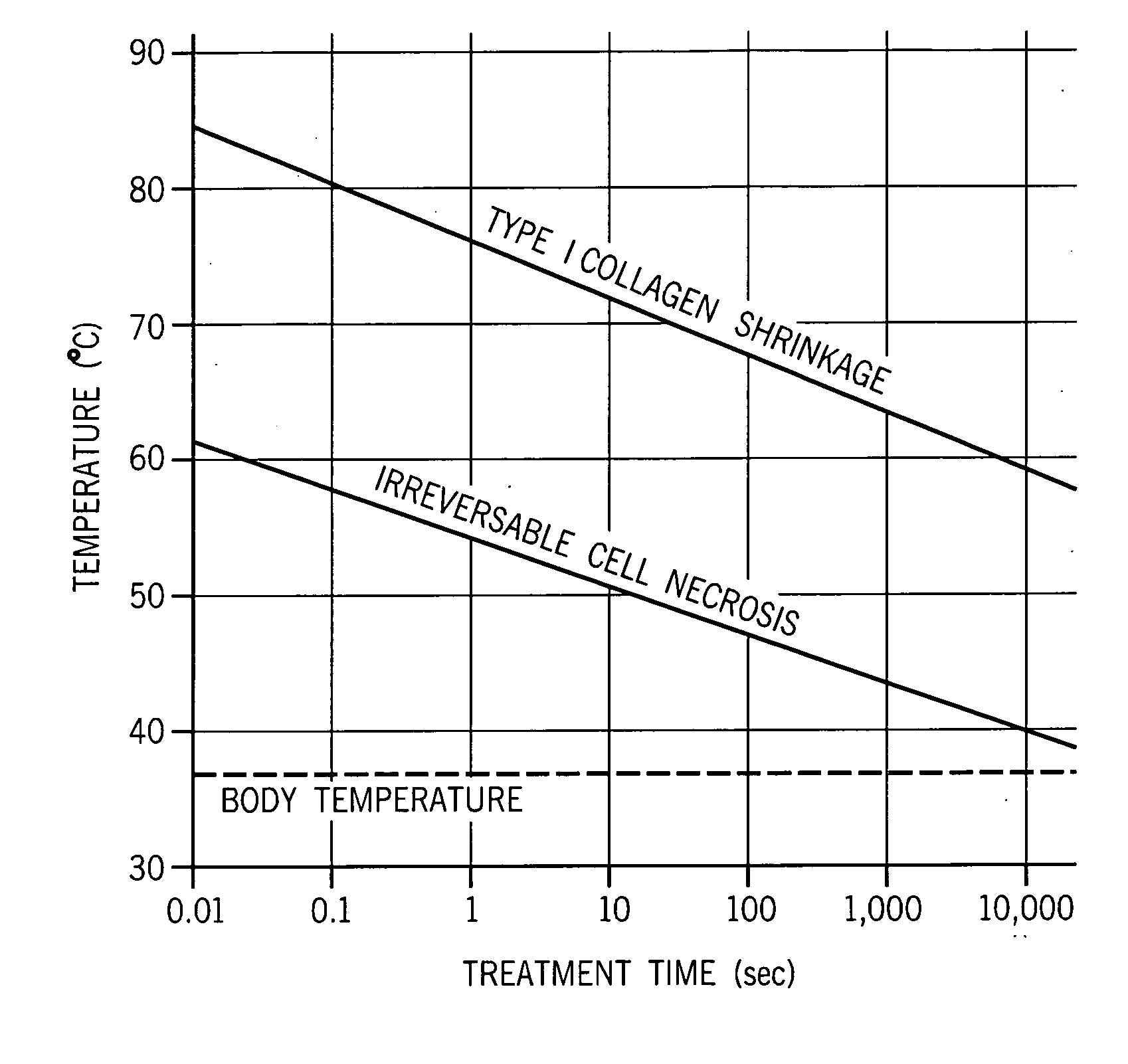Collagen density and structural change measurement and mapping in tissue
a collagen density and structural change technology, applied in the field of tissue monitoring and mapping equipment and methods, can solve the problems of shrinkage, thermally induced shrinkage procedures received with moderate success, and weaken the structural integrity of fibrils
- Summary
- Abstract
- Description
- Claims
- Application Information
AI Technical Summary
Benefits of technology
Problems solved by technology
Method used
Image
Examples
Embodiment Construction
[0039] The subject invention includes a system and method for mapping acoustic changes from an ultrasound image of tissue induced by a structural change or controlled thermal injury and mapping that information in a pixilated form. That is, each pixel, or square, in a two dimensional image or each voxel, or cube, in a three dimensional image, will be assigned acoustic characteristics based on the backscattered signal from that region and / or based on the transmitted signal through a specific tissue region. In particular, such a system and method assigns acoustic velocity values and acoustic attenuation values to each of the pixels.
[0040] As the treatment proceeds, the system and method will assign change values, and assign changes in collagen content concentration to those change values, to the acoustic properties for each pixel. The changes are most preferably color-coded to make interpretation of the changes easier for users who are not familiar with interpreting ultrasound images...
PUM
 Login to View More
Login to View More Abstract
Description
Claims
Application Information
 Login to View More
Login to View More - R&D
- Intellectual Property
- Life Sciences
- Materials
- Tech Scout
- Unparalleled Data Quality
- Higher Quality Content
- 60% Fewer Hallucinations
Browse by: Latest US Patents, China's latest patents, Technical Efficacy Thesaurus, Application Domain, Technology Topic, Popular Technical Reports.
© 2025 PatSnap. All rights reserved.Legal|Privacy policy|Modern Slavery Act Transparency Statement|Sitemap|About US| Contact US: help@patsnap.com



